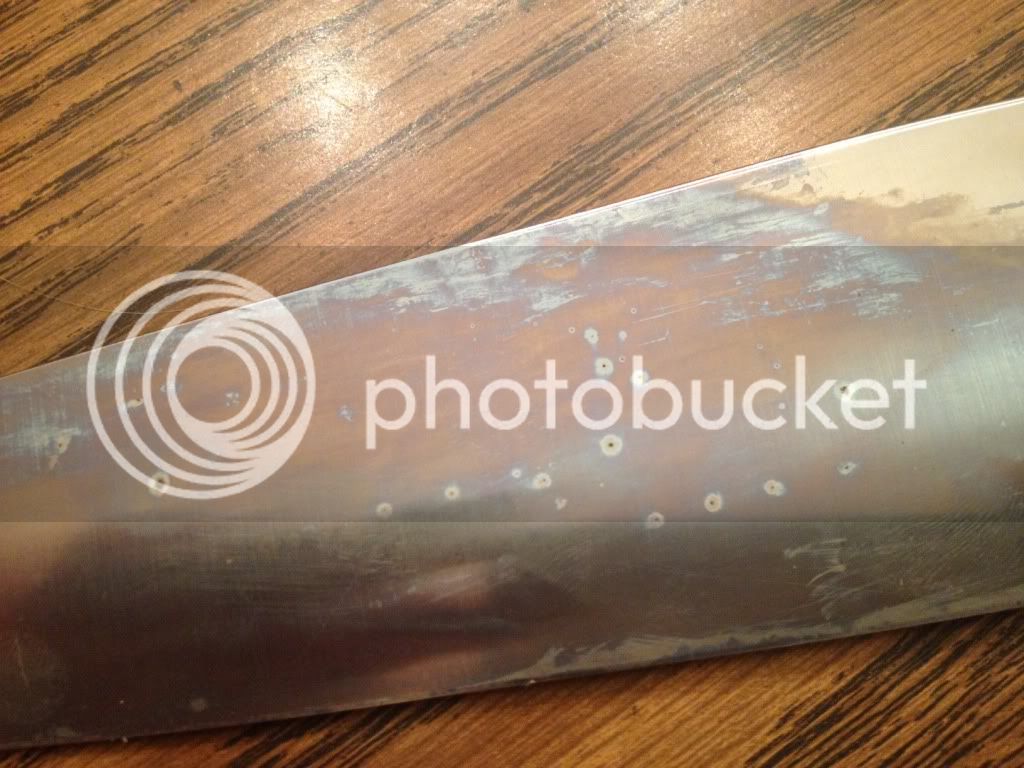stopbarking
Well-Known Member
- Joined
- Apr 20, 2011
- Messages
- 117
- Reaction score
- 0
Two part question.
1. Is this what I think it is?
2. What should I do about it?

1. Is this what I think it is?
2. What should I do about it?



Not if it's a hole.
How did you store this knife? Was it in a blade guard of some kind? Those blade guards can trap moisture, whether left over from cleaning the blade yourself or from condensing and trapping moisture in the air.
If it is indeed rust there, you want to get it off first. Use barkeepers friend or some other non-abrasive rust/tarnish remover - I'm assuming barkeeper's friend is non-abrasive cuz I don't use that particular product myself. For the pits themselves, you'll have to scrub the stuff out somehow. I tried elbow grease before and it was very time-consuming... but then again I had a more extensive problem. Using a brass or nylon brush on a Dremel (variable speed one that can go down to 15k-17k rpm) will really make things much easier. Brass will leave ... well, brass deposit though it works faster. Both brushes are softer than steel so they will scrub away the rust without removing steel.
The knife won't look pristine again, but at least this will stop further damage from occurring.
that is why i usually leave my knives out for a bit, after washing and drying them, before putting them away.
that is why i usually leave my knives out for a bit, after washing and drying them, before putting them away.
Another tip, besides leaving the knives out to dry for a while, is to use hot water to wash your knives. I'm sure most do it anyway, but it will also help your knives dry faster.
Another tip, besides leaving the knives out to dry for a while, is to use hot water to wash your knives. I'm sure most do it anyway, but it will also help your knives dry faster.
yep.
Enter your email address to join: